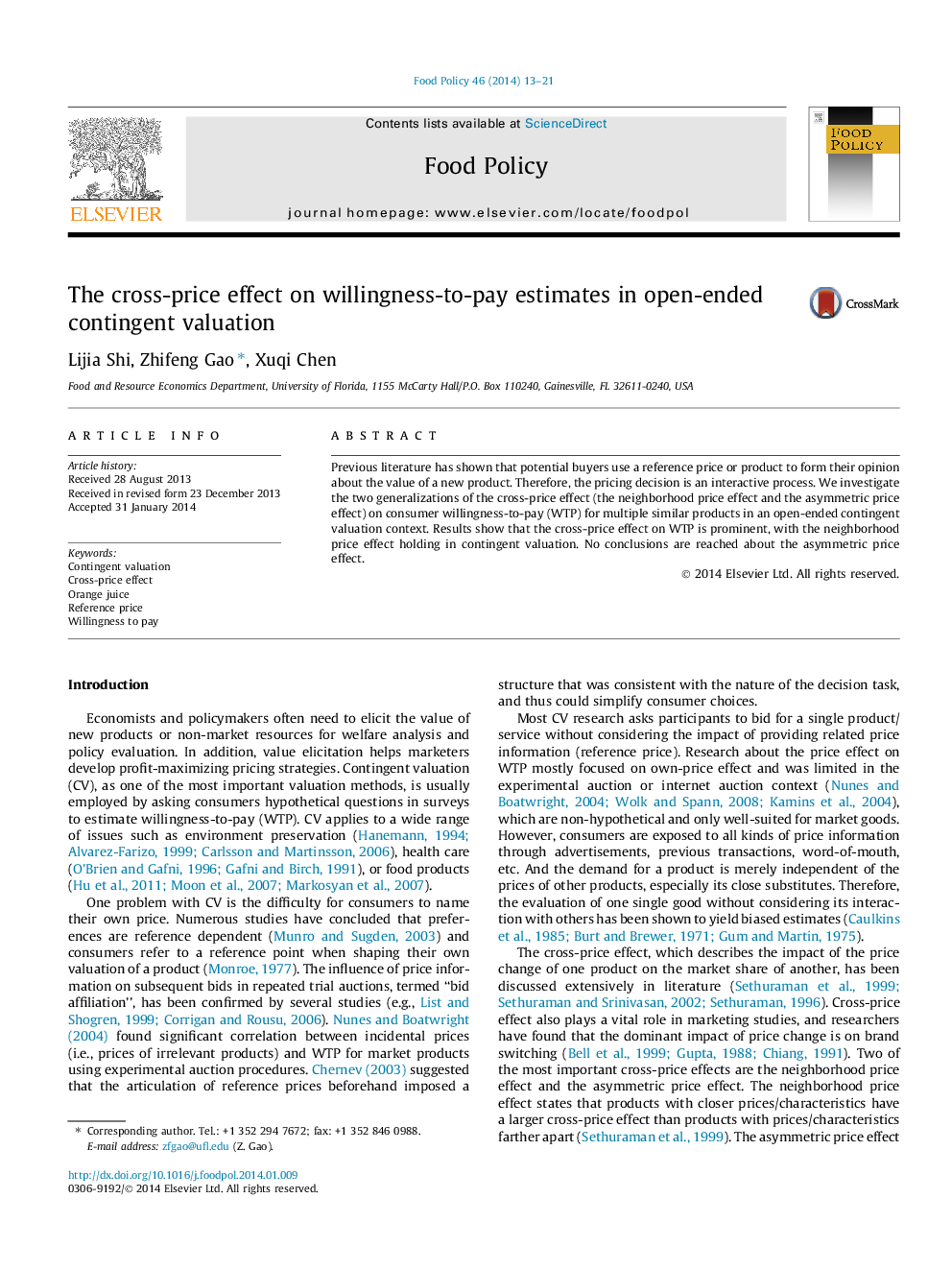| Article ID | Journal | Published Year | Pages | File Type |
|---|---|---|---|---|
| 5070509 | Food Policy | 2014 | 9 Pages |
Abstract
Previous literature has shown that potential buyers use a reference price or product to form their opinion about the value of a new product. Therefore, the pricing decision is an interactive process. We investigate the two generalizations of the cross-price effect (the neighborhood price effect and the asymmetric price effect) on consumer willingness-to-pay (WTP) for multiple similar products in an open-ended contingent valuation context. Results show that the cross-price effect on WTP is prominent, with the neighborhood price effect holding in contingent valuation. No conclusions are reached about the asymmetric price effect.
Related Topics
Life Sciences
Agricultural and Biological Sciences
Food Science
Authors
Lijia Shi, Zhifeng Gao, Xuqi Chen,
